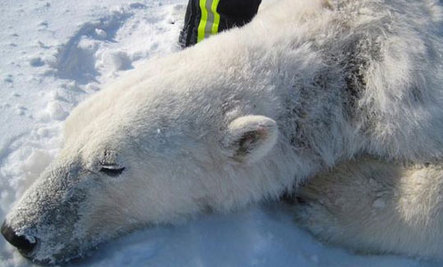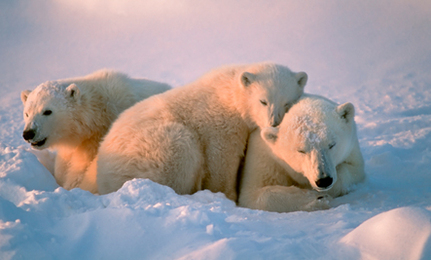Nine Alaskan polar bears near the southern Beaufort Sea were found with skin lesions and hair loss in the past two weeks, according to the The United States Geological Survey (USGS). It is not known what is causing these conditions, but they could be man-made and natural biotoxins, radiation, contaminants, auto-immune diseases, nutritional, hormonal and environmental factors. The same problems were also observed in seals and walruses in the region.
According to a USGS memo,”Evidence of alopecia and other skin lesions may be difficult to see unless the bear can be observed closely. In the polar bears that USGS has observed to date,
the most common areas affected include the muzzle and face, eyes, ears and neck.”
In the southern Beaufort Sea region a USGS survey estimated there were about 1,526 polar bears. Because of climate change, there is less and less ice available for polar bears in this area. Offshore oil drilling began there in the early 1970s due to the presence of large oil and gas reservoirs.
Polar bears are vulnerable to man-made pollutants due to the fact wind currents carry them there from other places, so they can accumulate in large quantities. Polar bear bones have already been weakened by these pollutants.
Article by J. Richardson





